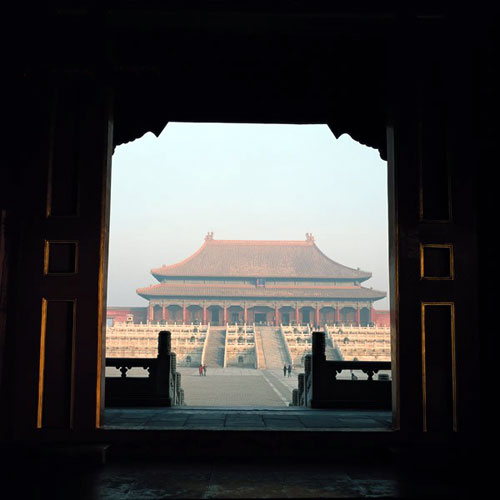Entering Forbidden City
 0 Comment(s)
0 Comment(s) Print
Print E-mail
Xinhua, October 17, 2011
E-mail
Xinhua, October 17, 2011

Wang Ge got lost during his first day of working in Beijing's Forbidden City, a palace over 500 years old, packed with some 9,000 rooms, high walls and labyrinthine passageways.
The Palace Museum, as it is also known, covers 720,000 square meters in the heart of China's capital and once housed 24 emperors of the Ming (1368-1644) and Qing (1644-1911) dynasties.
"In the darkness I could see nothing modern, only old walls and the roofs of halls. I had never felt so close to the ancients," Wang said of his first day working in the Palace Museum's exhibition department 11 years ago.
Like other museum staff, Wang rides a bicycle into the Forbidden City. Ordinary people were forbidden to get close to the palace during the imperial eras.
Although halls along the central axis and many of the main buildings in the Forbidden City have been opened to the public for years, most parts of the palace are used as offices or warehouses and have restricted entry for tourists.
Wang got an opportunity to go over these forbidden areas when he was assigned to draw an ichnography of the Palace Museum.
"I know which courtyard has the prettiest flowers, and which yard has the sweetest jujube," Wang recalled .
He enjoys feeding birds leftovers from his lunch, while cawing crows flying back to the palace at dusk signal the end of his workday.
In addition to birds, the Forbidden City is also home to snakes, rats, worms and ants. Wang said he has also seen lizards and bats in the past.
Wang said he can tell how long people have worked in the Forbidden City by the way they open doors.
"A bold young man will cross the threshold as soon as he opens a door, but an experienced worker will take a step back to avoid dust and anything else falling from the door. It's a weird, but reasonable habit formed in the palace," he said.
Wang has been transferred to the museum's publishing house of a monthly journal, "The Forbidden City", aims to introduce readers to the palace's history and culture.
Inspiration for a story struck while preparing for his wedding in 2006, and he compiled a special issue about the Qing Dynasty emperors' weddings, showing how much his life is influenced by his work in the palace.
"I won't get lost here any more. I feel my heart has been deeply rooted here, and I will never leave," Wang said.






Go to Forum >>0 Comment(s)